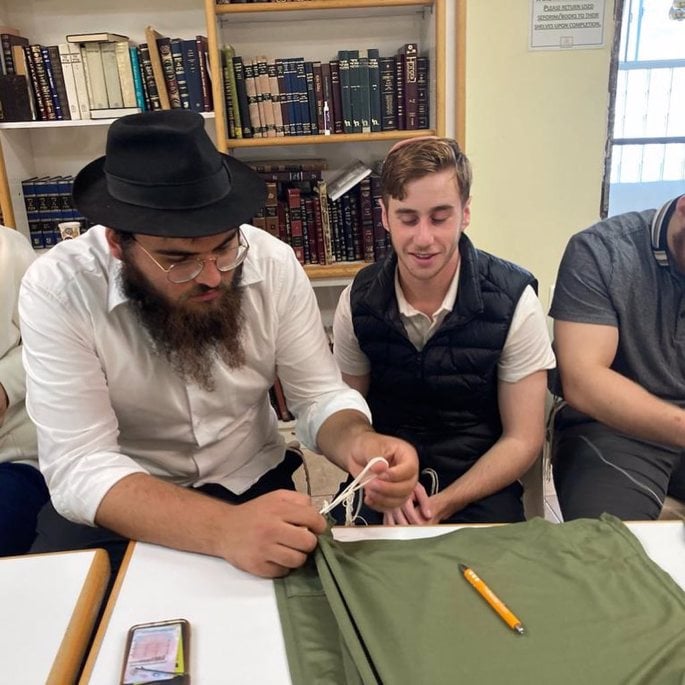
Hand-Tied Tzitzit from Students Bring Protection and Strength to IDF Soldiers
by Faygie Levy Holt – chabad.org
As Jewish men across Israel answered the call to serve in the Israel Defense Forces in the wake of the terror attacks on Oct. 7, they also sought ways to protect themselves spiritually.
For a growing number of soldiers, that meant donning tzitzit, a shirt with fringes made of eight strings that hang down on four sides of the garment. However, as the fringes, which are tied in a specific fashion, are hand-knotted, tzitzit cannot be mass produced.
Additionally, for military usage, there are specific fabric requirements that must be met to ensure uniformity and the safety of the soldiers.
To help ease the need, students at Chabad-Lubavitch’s Mayanot Institute of Jewish Studies in Jerusalem, took time away from their educational programs to help tie tzitzit for IDF soldiers.
“Worldwide there has been an overwhelming feeling of ‘What can I do to help make a difference?’” said Rabbi Shlomo Gestetner, dean of Mayanot. “The students wanted to help support our soldiers on an emotional, physical and spiritual level. Tzitzit, the Rebbe [Rabbi Menachem M. Schneerson, of righteous memory,] taught us, on top of being an important mitzvah, also provide real time physical protection for the wearer.”
The students also attached personal notes of support and encouragement for the soldiers.
According to Rabbi Shneor Broh, director of Mayanot’s post-high school program, some of the students were “a little nervous” at first because they had never tied tzitzit before. But after a tying-tzitzit workshop, the students got to work.
“The students stayed up late into the night hand-tying the tzitzit, which were then whisked away to army bases the next morning,” he said. “Seeing pictures of soldiers putting on those same tzitzit that they had just tied was both gratifying and extremely humbling. They felt very privileged to be able to do their part in helping those on the frontlines.”
Initially, the students made tzitzit out of dri-fit material for combat soldiers to wear while in battle. They eventually went on to make tzitzit out of blue fabric, as is required for soldiers serving in the Israeli air force.
Though the students may have started out by wanting to do something to help the soldiers, as they worked “they really understood the intricacies and importance of the process,” said Rabbi Kasriel Shemtov, the school’s executive director.
“Many of our students come from secular Jewish backgrounds, and might have themselves been unfamiliar with the importance of wearing tzitzit,,” he explained. “They came to help fortify, and they came out fortified themselves.”
















Aryeh Alexander
Awesome!
Esther
Baruch Hashem!